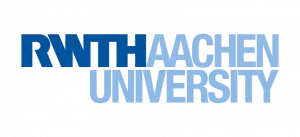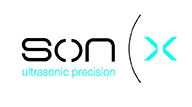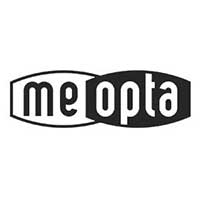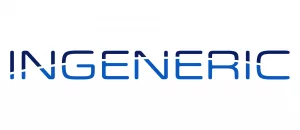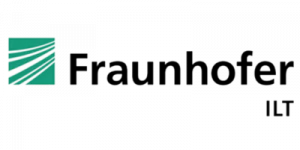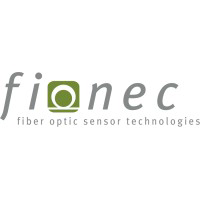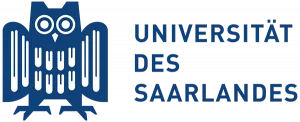EFFICIENTLIGHT
EFFICIENT FIBER-PIC COUPLING USING GLASS FORMING TO WAFER SCALE.
Drastic Cost Reduction For Monomode Fiber-Chip Coupling.
An industrial paradigm change is currently taking place as a result of the adoption of new data transmission standards. A multimodal fiber infrastructure has been utilized up until this point. This implies that information is simultaneously delivered through a variety of light modes. Monomodal systems with intricate coding techniques will be used in the future. Here, data transmission simply requires one light mode. Additionally, this development encourages the development of intricate optical transmission systems, or transceivers, based on photonic integrated circuits (PICs). The primary issue here is the monomodal connection of the optical fiber to these PICs or other optical systems that is both cost- and performance-effective.
As a result, this interdisciplinary effort is investigating a revolutionary performance and cost-effective monomodal optical fiber coupler technology based on glass precision molding. Couplers need to be compatible with automated assembly and be able to be concurrently pressed onto glass wafers in huge quantities in order to significantly lower production costs.
Innovative glass blank pressing and automated assembly
The targeted monomode fiber optic couplers are micro-optic devices created with the help of cutting-edge glass molding technology. Glass blanks are heated up and moulded into the correct shape for this use. The alliance’s primary goals are to examine cost-effective coupler production through wafer processing and power-efficient glass fiber coupling on various receiver modules.
All relevant sub-steps for this goal, including the optical and electrical design of the couplers and PICs, tool production, process technology, assembly technology, and application in the system, are covered in the network. Fundamental issues with system architecture, process design, and tool manufacturing are resolved, in addition to applicable issues with module integration.
Find more information here.
Wavealign
MODULAR ASSEMBLY PLATFORM FOR WAVEFRONT-BASED ALIGNMENT OF MULTI-ELEMENT OPTICAL SYSTEMS.
In this project, AIXEMTEC aims to prototype a new type of wavefront-based adjustment station and to demonstrate its potential using an industrial demonstrator as an example. The company’s flexible assembly technology, which supports the integration of new modules on both the hardware and software sides, serves as the basis for the developments. The adjustment station to be developed integrates wavefront measurement technology from PHASICS and high-precision micromanipulator technology from AIXEMTEC to form a new precision assembly tool that can be used in manual, semi-automated as well as fully automated production scenarios.
Furthermore, the control of the alignment processes is designed to support the model and simulation based toolchain of the joint partners Dynardo and Fraunhofer IPT. In this way, a highly flexible assembly platform for complex multi-optical systems is created.
Find more information here.
Augmented5g
AUGMENTED REALITY AND 5G AS ENABLERS FOR FLEXIBLE AND EFFICIENT PRODUCTION.
The aim of this project is to Provide intuitive guidance to production personnel using AR and 5G technology. Modern innovations like 5G and AR make it possible to assist the digital control of production machinery. The Fraunhofer IPT and its business partners hope to give production staff clear instructions with the “Augmented5G” initiative. A steeper learning curve will help employees be trained more effectively, among other things.
Additionally, client service can be offered from anywhere, obviating the necessity for time-consuming business travels. Tests are conducted in a true production setting at the 5G-equipped Aachen plant, and the rapid and reliable transfer of data is investigated.
Find more information here.
Fosdigum
MANUFACTURING COMPLEX OPTICAL SYSTEMS IN A DIGITIZED PRODUCTION ENVIRONMENT.
Current product generations’ optical systems and components exhibit exceptional performance. But this is evident in the difficulties facing production technology. The lengthy production process chain for optical systems and components presents one unique difficulty. The tightest tolerances are needed for each production stage in this chain of production, which means that they are at the limit of what is technically and physically possible.
There is also a chance for optics production to solve this issue in the context of the digitalization of complete production lines. Interdependencies between the process parameters and the product’s qualities can be found across several manufacturing phases with the use of intelligent sensor technologies and thorough data management and data analysis systems. A component-specific exploitation of these correlations in subsequent production steps is made possible by the precise evaluation of the current component status.
The FOSDIGUM project aims to apply the capabilities of a digitalized production environment to the creation of optical systems and components. In addition to traditional feedback, an adaptive feedforward is employed for this purpose. The component-specific adaptation of outstanding production steps based on the present component status becomes a key element of the production sequence, in addition to iterative enhancements of process steps that have previously been completed. By installing tolerance management across the borders of specific process steps, it is possible to adapt the remaining production steps to the characteristics of the component that has to be produced.
Find more information here.
Faserspan
LASER ASSISTED DIAMOND MACHINING.
Development Of Fiber-Coupled Tools For Resource-Efficient Laser-Assisted Precision Machining Of High-Strength Materials.
The change processes that will define the 21st century are as follows: To address the difficulties posed by advancing climate change and rising resource consumption, industrial practices and value generating systems must alter. By providing the economy with a sustainable viewpoint, cutting-edge environmental economics tools help to accelerate the green transition.
This is where the research project FaserSpan, in which fionec GmbH has been actively engaged since March, comes into play. The goal is to create fiber-coupled tools for high-strength material precision cutting that uses minimal resources.
The laser-supported diamond polishing process is an alternative to the energy- and environmentally-intensive slicing processes for the energy-efficient and resource-conserving manufacture of individual parts made of metal or technical ceramics. In order to enable a long-term industrial application of the technology, it is attempted to couple the laser beam directly into the tool via a feeder and so prevent disruptive effects between the laser beam and the tool or minimal mengenschmierung.
HIFI
HIGHLY INTEGRATED QUANTUM FREQUENCY CONVERTER OF HIGHEST FIDELITY BASED ON INNOVATIVE LASER, FIBER AND PRODUCTION TECHNOLOGY.
The photon plays a crucial role in all applications of quantum technology as a portable bearer of quantum information. Quantum frequency conversion, or the capacity to modify the photon’s frequency or wavelength in a focused way, is thus a crucial skill in the technical use of quantum phenomena. To enhance the methodical development of quantum frequency converters (QFC) and the fundamental technologies needed for them, the HiFi consortium has devoted itself to this cause. It combines knowledge in the scientific domains of quantum technology, optics, laser, fiber, automation, packaging, and production technology with technical implementation competence.
High conversion efficiency and low noise are QFC’s goals. The HiFi consortium has four major developments in mind to accomplish this: Innovative frequency converters for parametric noise reduction are listed first. Adapted frequency-stable semiconductor disk lasers are second. Low-loss fiber interface and filter technology is third.
QFC are necessary for conversion to the telecom band in order to be able to transmit light quanta in fiber-optic-based networks with low loss. Such networks will be used in the future to interleave the quantum processors and registers of various computers over great distances in order to share data and resources in a private, secure manner and to increase the computational capacity of quantum computing. World-class experiments, including the Quantum Internet Demonstrator in Delft, are validating the performance of the QFC built in HiFi.
Find more information here.
